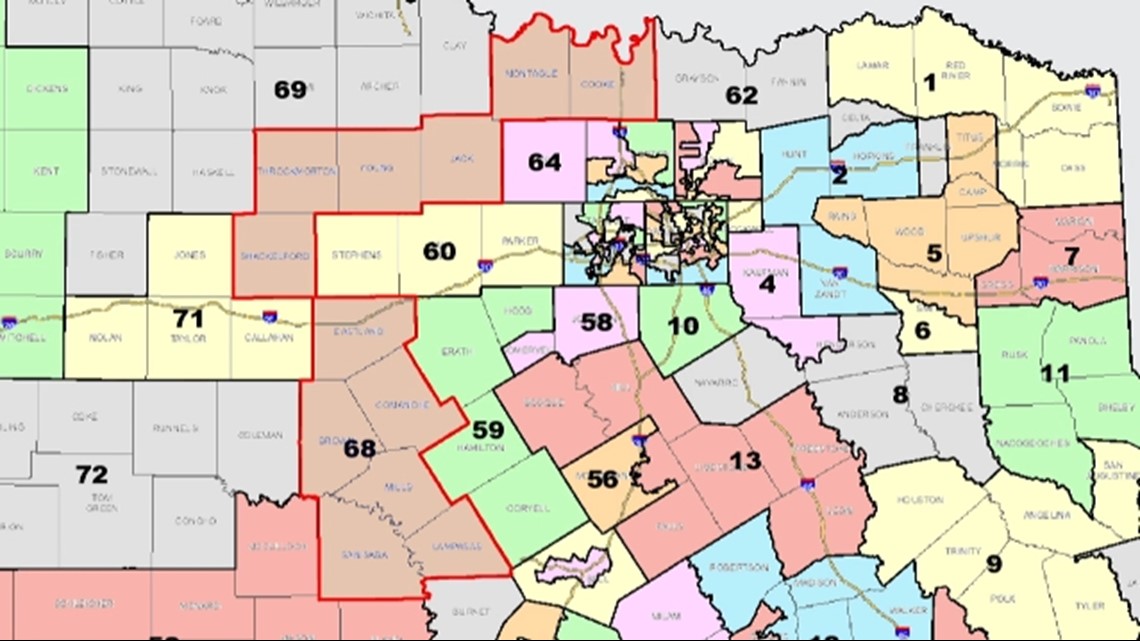BELL COUNTY, Texas — There are several principles state lawmakers could historically follow when redistricting, according to Baylor Political Science Professor Patrick Flavin.
Lawmakers can decide to keep "communities of interest" together, they can keep districts compact and focus on keeping jurisdictional boundaries intact, he said.
In practice, however, many Texas communities are seeing none of these principles as the legislature rolls out new district maps, and lawmakers have only three requirements:
- Districts of a given type must have equal or nearly equal populations
- Districts must be drawn with continuous lines so that they are not separated
- Districts must be drawn in a manner that neither has the purpose nor will have the effect of denying or abridging the right to vote on the basis of race, color or language group
This is how Texas ends up with districts such as Texas House of Representatives District 68 highlighted in red below.


District 68 some represents both the City of Lampasas in central Texas and the City of Gainesville near the state border with Oklahoma.
The third rule, dictated by the Voting Rights Act of 1965, is where the maps do have, at the very least, some gray area.
Data from the U.S. Census Bureau shows the City of Waco is 32 percent Hispanic. The new district map for the Texas House of Representatives splits Waco between two districts that are less than 25 percent Hispanic each.
The City of Killeen has a population that is 40 percent black. That same district map splits off part of Killeen so that one district is 31 percent black and the other is around 23 percent black.
Flavin said you could make a case in several areas, but federal courts will often only take the more egregious cases under consideration.
“Groups are making the arguments that these maps violate the voting rights act. That they dilute the political power and political influence of their voters,” Flavin said “The most likely outcome is that the courts will defer to the state legislature. A very good case could be made there are voting rights infractions here but courts won’t stop the maps from going into effect.”
If the courts are convinced there is an issue, Flavin said they would normally tell the state legislature to go back and correct those maps. If the courts still don’t approve changes after that, Flavin told 6 News a federal judge may create a separate committee of experts to make changes.
At the same time, Flavin stressed that courts would only take action if they see an issue with racial gerrymandering. Political gerrymandering, or the act of redrawing districts to benefit a political party, is not technically illegal, no matter how ridiculous the districts appear to be.

